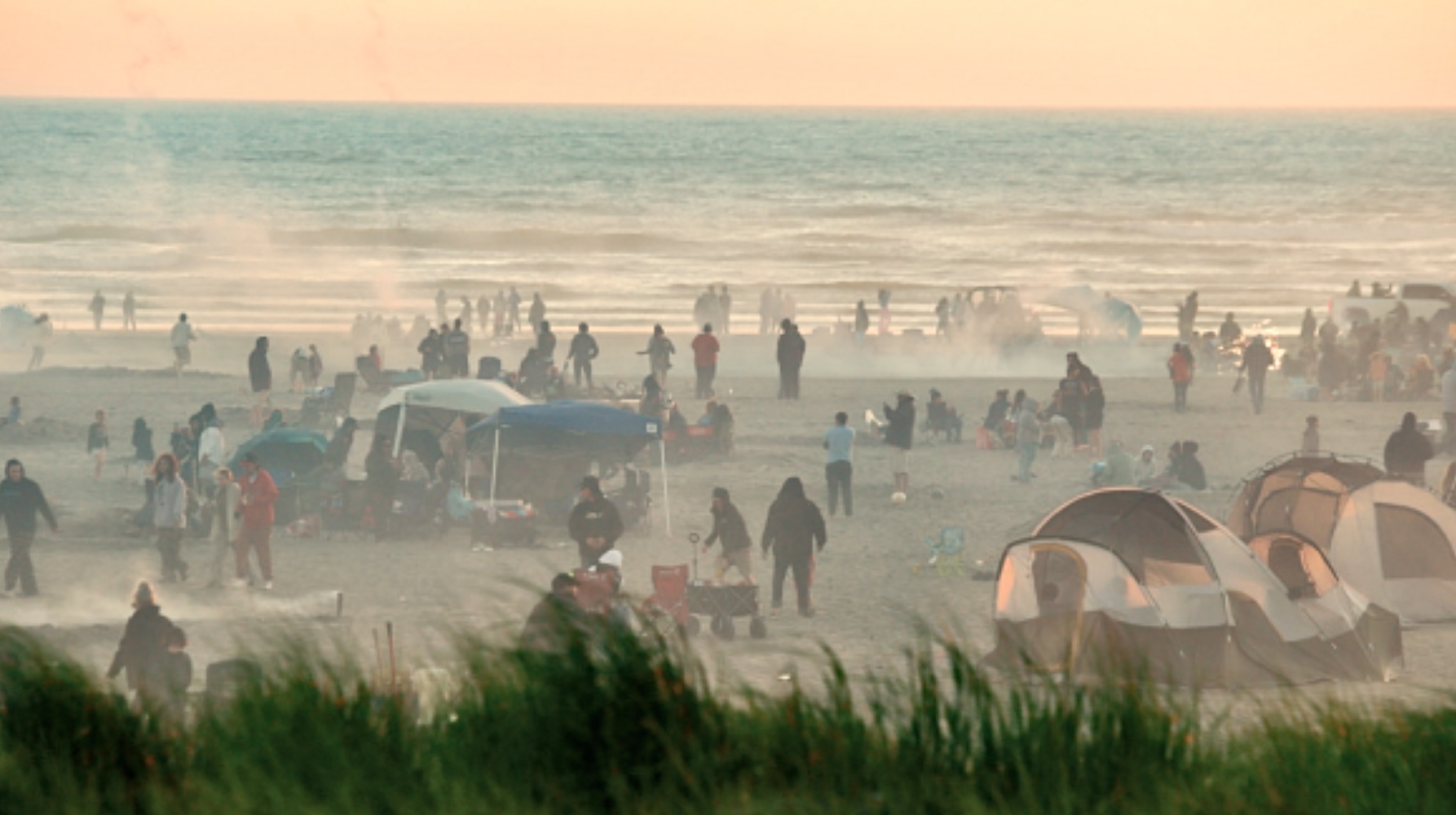Long Beach eyeing new vacation rental restrictions, regulations
Published 5:52 pm Monday, September 26, 2022

- Long Beach Community Development Director Ariel Smith
LONG BEACH — A draft ordinance introduced at a Long Beach City Council workshop last week includes new vacation rental restrictions, regulations and fees that will be enshrined into city code if passed.
The proposed ordinance drafted by city staff drew much attention at a workshop held ahead of the Sept. 19 council meeting. The council placed a moratorium on allowing new short-term vacation rentals in June, after staff said they were inundated with permit requests. Staff suggested a pause would allow them to revise city code and develop new regulations surrounding vacation rentals.
Some of the new language being considered is similar to that of Pacific County from two years earlier, when county commissioners — after a nearly year-long process — adopted new restrictions on where and to what extent vacation rentals will be permitted, as well as up-front and annual fees.
Proposed action
In Long Beach, vacation rentals are already prohibited in most residential zones. In the two residential zones where they are allowed as a conditional use, two-family residential restricted (R2R) and shoreline multi-family residential (S2), the proposed city ordinance would impose a density ordinance requiring vacation rentals to have a distance of at least 200 feet — measured from all property lines — from any other vacation rentals.
‘We’re trying to solve a decades-long problem. This has been going on for decades — decades — and we’re going to have to fix it.’
City Councilor Patrick Reddy
For multi-dwelling properties in those residentially zoned areas being looked at as a vacation rental, the ordinance would also clarify that only one of the structures on the property may be licensed as a vacation rental.
Before being issued an initial vacation rental permit, the owner must demonstrate that the rental has been registered as a business with the state, provide proof of insurance, and attest that all applicable lodging taxes will be paid.
In regard to occupancy limits, no more than two overnight occupants per bedroom — plus two additional overnight occupants — could be accommodated at any one time, in line with existing city code. For example, a three-bedroom vacation rental would be allowed eight overnight guests. The maximum number of overnight guests for any rental would be 10, regardless of the number of bedrooms, and the max occupancy when advertised could not be listed as exceeding the permitted occupancy.
Each vacation rental would be required to have one off-street parking space for each bedroom unit, and a minimum of two off-street spaces overall.
Prior to submitting an initial application for a vacation rental, an operation and maintenance inspection would be required. A fire and life safety inspection, performed by the city, would be required before the initial permit has been issued. An accurate to scale floor plan would also be required for all new and existing rentals. Each inspection would then be required on an annual basis.
An initial fee of $1,200 for the vacation rental license and needed inspections has been suggested by staff — compared to an $845 fee at present, set in 2018 — with a $500 annual license renewal fee thereafter while the vacation rental is in operation. The license would be non-transferable, which Long Beach Community Development Director Ariel Smith said is a noticeable change from existing city code.
The draft ordinance would also formalize the process for when a complaint against a vacation rental has been lodged, which Smith called “extremely helpful” to city staff.
“Right now we could get a complaint that they’re violating a portion of the permit, but I don’t necessarily have a process to go by,” Smith said, “so this is extremely helpful to us to kind of determine what step we’re at, how many complaints they’ve had and what we should do next.”
A property management plan would also need to be submitted and approved, as already required by city code, and must demonstrate how the rental will be managed and how any impacts to neighboring properties will be minimized. Smith said the language in the proposed ordinance goes much more in-depth than what’s currently on the books.
‘Right now we could get a complaint that they’re violating a portion of the permit, but I don’t necessarily have a process to go by…’
Ariel Smith
Long Beach Community Development Director
The plan must include information such as the property manager’s name and phone number, the local point of contact who’s responsible for immediately responding to complaints, how garbage removal is to be conducted, and a statement identifying procedures occupants should follow in case of an emergency. Once approved, it must be mailed to all adjoining property owners within 300 feet, and be prominently displayed inside the front entrance of the rental.
In regard to appearance, the exterior of the building would have to maintain a residential look, with house numbers maintained on the front of the building and visible from the road. Junk or garbage accumulating in any of the yards would be prohibited, and all vehicles must be parked in the designated spaces. Arrangements for garbage removal would have to be made during rental periods, and proof of garbage service must be provided to the city.
Animals would have to be secured at all times while on the property, in addition to all other city regulations regarding pets being followed. There could not be more than three dogs staying at a rental at one time.
Fences would be required for all vacation rentals, and each property housing a rental must conform to their existing zoning requirements.
One sign, no larger than four square feet, would be required to be attached to or placed in front of the vacation rental to help people identify the property.
Reaction
Councilors reacted mostly positively to the proposals presented to them at the workshop, although there were some questions or concerns about certain areas of the draft ordinance.
Councilor Patrick Reddy asked staff about the requirement that all vacation rentals must have fencing.
“Good fences make good neighbors,” said Long Beach City Administrator David Glasson, saying the city has received several complaints about pets or children coming onto neighboring properties. “If you have a fence, there is no question on that.”
Reddy, playing devil’s advocate, questioned why fences would be required for vacation rentals when they’re not required for residential properties, and why they should be subject to inspections that aren’t required of the hotels that are located within the city.
Mayor Jerry Phillips said inspections, as a result of this process, are something the city is now looking at requiring for hotels as well. He added that one of the city’s biggest impediments in enforcing these proposed regulations is that it doesn’t have a full-time code enforcement officer. Glasson did note that there are fire, safety and other standards that hotels and other lodging establishments must adhere to that residential buildings do not.
Several councilors reiterated their support for vacation rentals and the positive impact they have on tourism, but said the proposed changes would provide better oversight of the burgeoning industry and keep residentially zoned areas from becoming too commercialized.
Councilor Sue Svendsen wondered whether the 200-foot distance requirement was too restrictive and if using a percentage-based formula would make more sense. Smith and Glasson said going from 200 feet to 100 feet could be the difference between having four rentals on a given street, and having seven or eight rentals on that street.
Residents of streets and neighborhoods that have high concentrations of vacation rentals spoke during the workshop and sought clarification on what effect the ordinance, if passed, would have on already-existing rentals. Those rentals would likely be grandfathered in if they meet the newly proposed requirements.
Phillips and councilors stressed that the draft ordinance was exactly that — just a first draft of trying to address a long-term issue in Long Beach. They warned that no side would be fully satisfied, as the city grapples with supporting the ever-important tourism industry, creating and preserving affordable housing options for workers and residents, and avoiding excessive commercialization of residential neighborhoods.
“We’re trying to solve a decades-long problem,” Reddy said. “This has been going on for decades — decades — and we’re going to have to fix it.”









